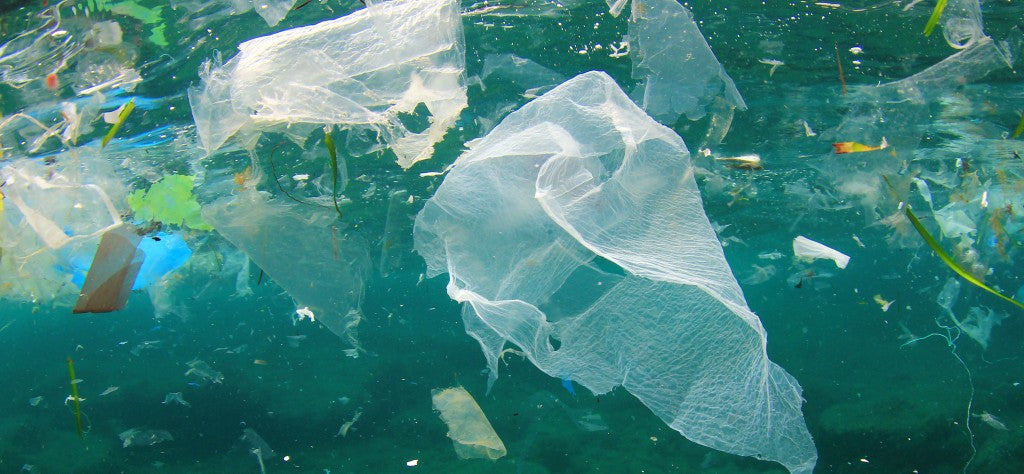Product marketing teams have been promoting the use of biodegradable or eco-friendly plastics in their manufacturing for years, but have you ever wondered what the truth is behind these claims?

Many bioplastics (a type of plastic that can be made from natural resources such as vegetable oils and starches) claim to be eco-friendly, biodegradable, or compostable. And while some are produced using fewer resources and toxins than regular plastic, the issue lies with the fine print behind their claims.
What consumers typically don’t realize is that there are various certifications for biodegradability, and many bioplastics require commercial facilities for their products to biodegrade under the right (extremely hot) temperatures. Unfortunately, many municipalities and manufacturers are not willing to fund such facilities without consumer or regulatory pressure to do so. Additionally, recycling any plastic often requires ten times the energy used in producing the material, which generates a valid debate around the benefit of recycling these products.
The same issues exist in the 3D printing world; most 3D printed products are made using PLA (polylactic acid) plastic and come with the same issues around biodegradability stated above. This begs the question; will 3D printing really change the game around environmentally friendly manufacturing and fulfillment if it’s just adding to the recycling challenges that currently exist?
Enter PHA plastic…
PHA in 3D Printing
PHA (polyhydroxyalkanoates) is a revolutionary thermoplastic polymer plastic type that is biodegradable and compostable in natural environments including soil, compost, and marine sediment.
Yes, you heard that right; if someone were to throw a 3D printed cup into the ocean it would be able to compost itself into simpler, non-toxic substances.
A piece of PHA with the same thickness as a piece of paper will decompose at a similar rate as that paper. Not only that, but PHA can be produced naturally by certain microorganisms, such as bacteria. PLA, on the other hand, requires specialized commercial facilities to enable proper composting at temperatures from 55-70 degrees celsius.
Until recently, PHA was not commonly used in 3D printing, with PLA being the most accessible and affordable filament to use. Still today, only a few companies are using PHA for their 3D printed products.
At Gamer Gadgetry, the option to use PHA plastic filament was discovered during research for new environmentally-friendly alternatives that could withstand higher temperatures, such as dishwasher heat. Since then, new PHA prototypes have been tested and validated.
6 Reasons to Use PHA Plastics For 3D Printed Products
- Biodegradable Certifications to Prove Sustainability Claims
When it comes to verifying certifications for plastic biodegradation, the most significant one is ASTM 6691. This certification is crucial in ensuring that biodegradable plastics will naturally break down into harmless substances, leaving no harmful residues in the environment.
ASTM 6691 specifies the test methods for determining the biodegradation of plastic materials in marine environments.
Gamer Gadgetry collaborates with PHA suppliers that have undergone the most stringent testing available for plastic biodegradation, as per ASTM 6400 and ASTM 6691 Marine Biodegradation standards.
-
Marine Biodegradable Products
To meet the ASTM 6691 standard, a plastic material must show evidence of biodegradation, meaning that it has broken down into simpler, non-toxic substances in the marine environment.
PHAs have been reported to degrade in aquatic environments (Lake Lugano, Switzerland) within 254 days even at temperatures not exceeding 6 °C.
- Compostable Products
PHA plastics have been recorded at composting at temperatures between 8 and 30 degrees celsius, giving it a much more feasible chance of decomposing in natural conditions without requiring a specific commercial composting facility.
- Low Environmental Impact
Not only will you be able to make true claims in your marketing campaigns around biodegradability, but you will be able to sleep at night knowing that your products are not only meeting an immediate consumer need but also contributing to a sustainable future in production (new campaign alert!).
-
Large-Volume Production
Gamer Gadgetry is well-equipped to handle large order volumes for PHA plastic, making it an ideal choice for replacing single-use petroleum-based plastics in various applications, including drinkware at places such as sports venues and music festivals.
-
Custom Pricing
Due to its cutting-edge nature, using PHA plastic in 3D printing can be expensive. However, Gamer Gadgetry is focused on establishing strong relationships with our suppliers who are at the forefront of the science and politics surrounding this material.
This allows us to work towards reducing costs and promoting government incentives for PHA plastic adoption. Our aim is to make PHA plastic a more accessible and cost-effective solution so that more individuals and businesses can make the transition towards eco-friendly alternatives to single-use petroleum-based plastics.
Just want to see an example of PHA plastic products before you create your own prototype? Contact us for a free sample. And be sure to check these really cool PHA straws by beyond plastic, which offer an excellent alternative to traditional petroleum-based plastic straws. These PHA straws are durable and won't disintegrate in your mouth, providing a safe and eco-friendly option for sipping on your favorite beverages.
In Summary
At Gamer Gadgetry, we are committed to using PHA plastic in our production of eco-friendly drinkware and other products. We are also capable of handling higher volume runs of drinkware using PHA plastic, offering a durable and sustainable option for businesses and organizations looking to make the switch to environmentally friendly materials.
If you're interested in reducing your carbon footprint and supporting sustainable practices, contact Gamer Gadgetry today to discuss your PHA plastic printing needs. Together, we can help create a cleaner and healthier environment for generations to come.
